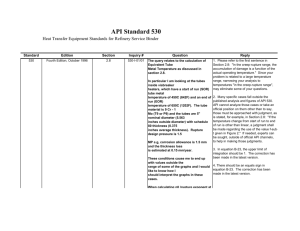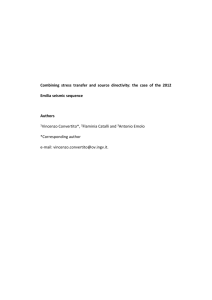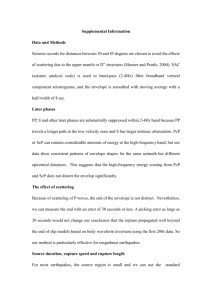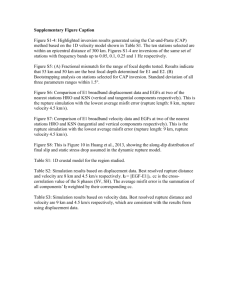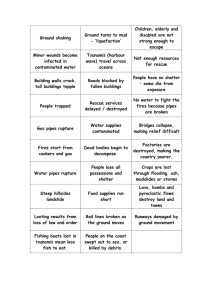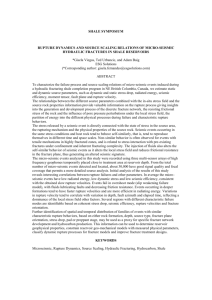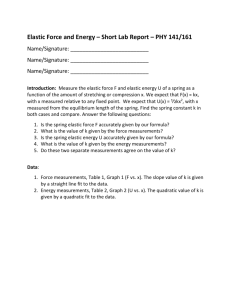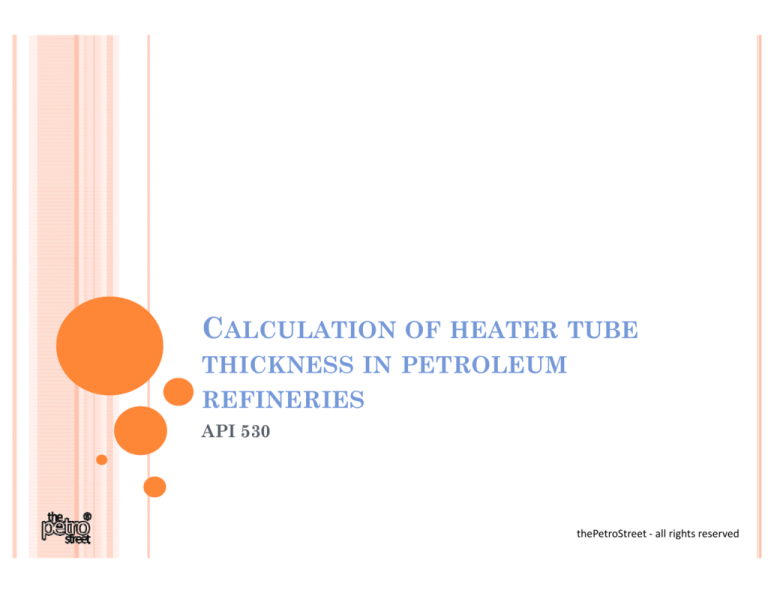
CALCULATION OF HEATER TUBE
THICKNESS IN PETROLEUM
REFINERIES
API 530
thePetroStreet ‐ all rights reserved
SCOPE
API 530 covers design
g p
procedures of p
process fired
heater tubes (direct fired, heat absorbing tubes within
enclosures)
| Furnace
F
tubes
t b and
d waste
t h
heatt exchangers
h
t b are
tubes
designed on API 530
| Design of external piping is not covered in this
standard
|
thePetroStreet ‐ all rights reserved
LIMITATIONS
Apply
pp y to thin tubes with thickness to dia ratio less
than 0.15
| Apply to seamless tubes. When applied to welded
t b multiply
tubes
lti l allowable
ll
bl stress
t
with
ith joint
j i t efficiency
ffi i
| No consideration for graphitization, carburization, or
hydrogen attack
|
thePetroStreet ‐ all rights reserved
DESIGN
| Heater
tubes are designed in two different
design conditions:
y
y
Elastic Design (lower temperature)
Rupture Design (higher temperature)
| Creep
rupture occurs in steel at high
operating temperature even at stress levels
well below the yield strength
| Creep rupture is permanent deformation, a
failure mode other than elastic/plastic
deformation
thePetroStreet ‐ all rights reserved
DESIGN
When tube temperature
p
will be high
g enough
g for creep
p
to be significant, tube will fail from creep rupture
| For steels operating at lower temperature, the effects
off creep will
ill be
b negligible
li ibl (elastic)
( l ti )
| Experience indicates that in elastic case tube will last
indefinitely unless a corrosion or oxidation
mechanism is active
|
thePetroStreet ‐ all rights reserved
DESIGN
|
Elastic design
y
y
y
Based on preventing bursting
Design in elastic range at lower temperature
Allowable stresses based on yield strength
ts =
Pe Do
2 S e + Pe
t m = t s + CA
where,
h
Pe = design pressure
Se = allowable stress in elastic range
Do = outer diameter of tube
ts = stress thickness
tm = minimum thickness
CA = corrosion allowance
thePetroStreet ‐ all rights reserved
DESIGN
|
Rupture design
y
y
y
Based on preventing creep rupture
Design in creep range at higher temperature
Allowable stresses based on rupture strength
ts =
Pr Do
2 S r + Pr
t m = t s + fCA
where,
Pr = rupture design pressure
Sr = allowable rupture strength
f = corrosion fraction function of B and n
B = CA/ts
n = rupture
p
exponent
p
at design
g metal temperature
p
thePetroStreet ‐ all rights reserved
DESIGN
Known values will be design
g p
pressure,, design
g metal
temperature and outside diameter of tubes
| Determination of design criteria (elastic or rupture)
will be done with the help of graph given in API 530
| The same graph will provide the value of allowable
elastic or rupture strength
| Here,
H
we will
ill go through
h
h both
b h off designs
d i
|
thePetroStreet ‐ all rights reserved
DESIGN
|
We take the example
p of a coil
Design pressure = 38 kg/cm2
y Design temperature = 660 °C
y Material
M t i l off coil
il – A-312
A 312 TP 321 H
y
|
Graph will define the type of design to be followed
thePetroStreet ‐ all rights reserved
thePetroStreet ‐ all rights reserved
DESIGN
|
|
|
Rupture
p
design
g governs
g
as allowable stress is
less than elastic marginal stress
More data is required to get the value of
allowable rupture strength like design life of
tube (to be decided by the designer) and
rupture pressure which is less than elastic
design pressure
See the g
graph
p on the next page
p g for clarity
y
thePetroStreet ‐ all rights reserved
thePetroStreet ‐ all rights reserved
DESIGN
So allowable rupture
p
strength
g comes out close to 41
MPa considering design life of 100,000 hrs
| Likewise, we can evaluate the thickness by using the
f
formulas
l given
i
above
b
if rupture
t
pressure is
i defined
d fi d
| Elastic design is simple to practice design procedures
|
thePetroStreet ‐ all rights reserved
THANK YOU
VISIT US
@ WWW.THEPETROSTREET.COM
thePetroStreet ‐ all rights reserved

